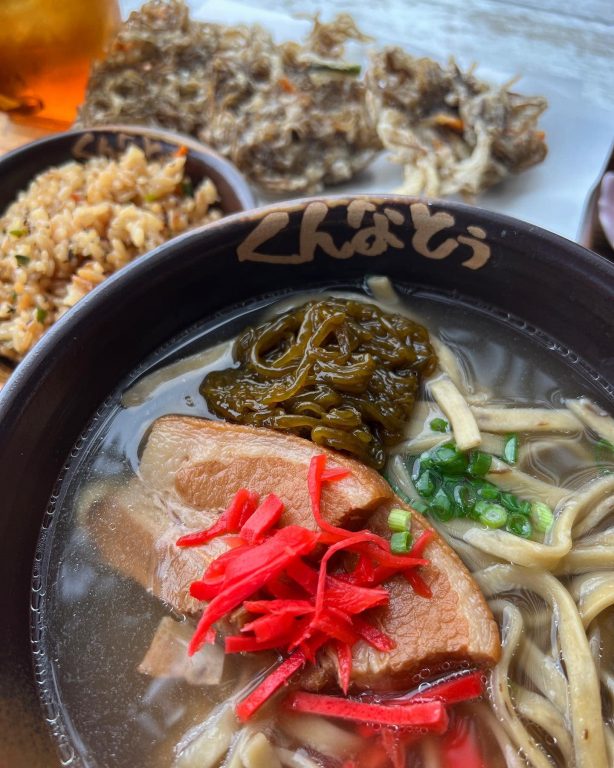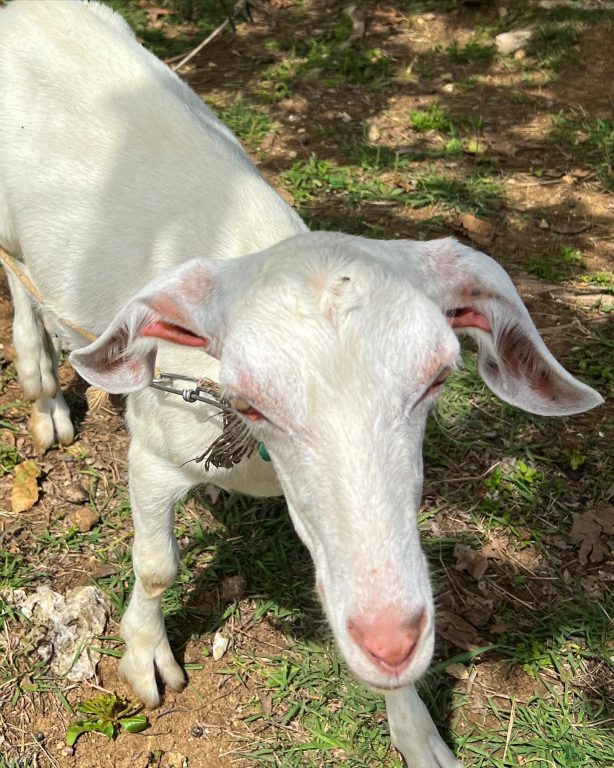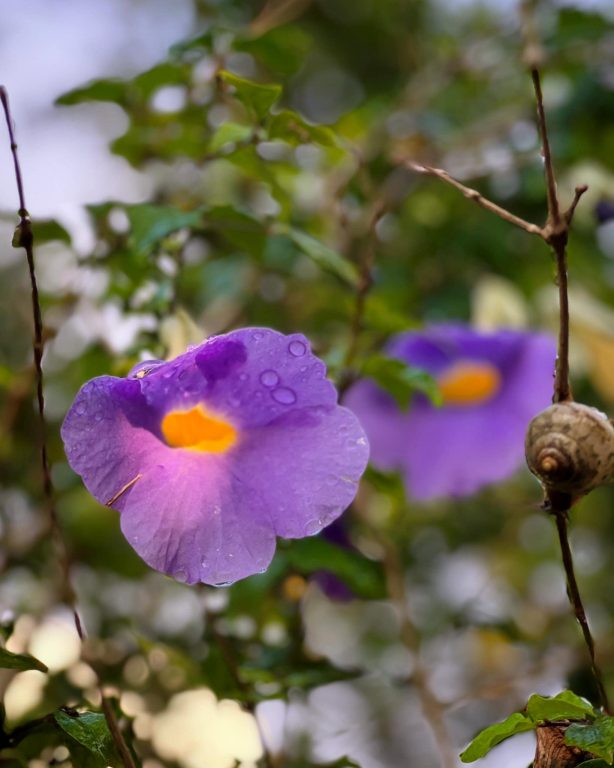The fascination of Okinawan foodstuffs attracting attention at “Chimudon”!

Okinawa is excited about “Chimu-dong-dong”.
Hopefully the wonderful local cuisine will once again be known throughout the country.
Many Okinawan foods are low in calories. In the past, the secret of longevity was due in part to the fact that all the plants growing in the area were medicinal herbs. Nowadays, due to the Americanized diet (steaks, hamburgers, etc.), these ingredients are being forgotten.
The use of post-harvest technology, which does not use harmful preservatives, is essential for the nationwide and global expansion of food products made from the fertile and powerful land of Okinawa.
Nowadays, there are many delivery problems, and even regular TA-Q-BIN takes one day longer to reach Tokyo.
There are many ways to utilize Okinawa, such as tourism, but I think Okinawa Prefecture should take the lead in improving logistics from Okinawa to the interior (mainland).
Moreover, Okinawa’s trade area is not limited to Japan. The future of Okinawa will be greatly enhanced by establishing a quick delivery network to Taiwan, Shanghai, and Manila. We look forward to a visionary political system.
◆Okinawan Foods
papaya
In Yaeyama, it is commonly planted in the gardens of many households, and it is more popular to harvest it while it is still green and eat it as a vegetable, such as stir-fried ilichii, than to eat it as a fruit. It is also sold in supermarkets in Ishigaki Island, sliced into thin strips.
Green papaya is said to restore strength after childbirth, warms the body, cleanses the blood, which is the source of breast milk, and improves blood circulation, thus improving the production of breast milk.
Red sweet potato (Beni imo)
Red potatoes are also rich in nutrients such as polyphenol (anthocyanin), a natural reddish-purple component that has been attracting attention in recent years, plant fiber, and potassium.
Recently, it is often used in baking.
Nabella (loofah)
In Okinawa, loofah is also a fine food.
As for cooking methods, stir-frying with miso and nmbusi (stewed with miso) are recommended. Nabeela (hechima) is a popular summer vegetable and a popular ingredient in miso soup. The texture is similar to eggplant, but more crispy.
bitter gourd
The summer vegetable of subtropical Okinawa is goya (bitter melon), which is planted not only in farmers’ fields but also in the gardens of ordinary households in the summer.
Bitter melon contains vitamin C, a nutrient that helps maintain healthy skin and mucous membranes and has antioxidant properties. It also contains many other minerals, carotene, and other nutrients that give it a power unlike any other vegetable.
The bitter taste of bitter melon is actually momordecin, a bitter ingredient. This unique bitterness of bitter melon is said to have the effect of increasing appetite, and is a representative of Okinawan vegetables that are popular among many people as a way to prevent summer fatigue.
Japanese onion (edible plant, Allium thunbergii)
Small radishes, or shimarakkyo, from the island.
Tastes similar to “nobile,” which grows wild on spring side roads in the interior.
It is very tasty and crispy. It is good to shave bonito flakes, drizzle a little soy sauce, and eat it as it is with white rice, but if you take a little time and effort to make tempura, you will have a gorgeous Okinawan local dish.
It is easy to cook and makes a perfect snack for alcoholic beverages.
island carrot (Daucus carota)
The “island carrot” from Okinawa is yellow in color and long and thin like a burdock root.
The season is from October to February, when it is available in markets, but not often in supermarkets.
It is used as an ingredient in soups such as beef soup and pork miso soup, and in stir-fries such as chanpuru.
Rich in carotene, it has a warming effect on the body, and when cooked with oil, the absorption of carotene improves. It tastes sweet and has no peculiar taste.
When stir-frying, use island miso. It goes well with “island carrots” and gives them a savory flavor.
Okinawan-style tofu
Tofu is made from the juice of crushed soybeans, which is then boiled and separated into okara (bean curd) and soymilk, whereas Okinawan “island tofu” is made from the juice itself, which is then separated into okara (bean curd) and soymilk.
Because the soybeans are used raw, they contain more flavor and nutrients and have a higher protein content.
Nigari (nigari) is added to the soy milk thus produced to make yushi-dofu (oboro-dofu). Yushi-dofu has a rich soybean flavor and contains 1.3 times more high-quality soy protein than mainland cotton (momen) tofu. It does not easily fall apart without draining, making it suitable for stir-fry chanpuru and other dishes.
sea grapes (Caulerpa lentillifera)
Also called “green caviar,” umi budou is as crunchy as it looks and resembles fish roe. Native to Miyako Island and southward, this seaweed cannot be refrigerated and is also sensitive to heat.
It is weak against cold and melts when placed in the refrigerator, and also melts quickly when heated. What about this one? If you soak it in water, it will melt away due to osmotic pressure. Seaweed is very difficult to preserve.
Like mozuku, it is eaten with vinegar and soy sauce. It is also quite tricky to eat them.
mozuku (Cladosiphon okamuranus, species of edible seaweed)
About 80% of the nation’s mozuku production comes from Okinawa. Okinawans love mozuku and eat it every day.
Mozuku has begun to attract attention because of its slimy component, fucoidan, a polysaccharide. It has been confirmed to be effective in eliminating cancer cells. It is also extremely effective in sterilizing pathogenic E. coli O-157.
It also reduces bad cholesterol and is truly a “Chinugusuri (medicine for life)” gift from the Okinawan sea.
Arthur (Aosa)
Arthur” in Okinawa means “aosa” in Japan.
In Okinawa, it is commonly served in a soup called “Arsa-jiru,” but it can also be eaten with Sanbaizu (vinegar), added as a topping to salads, or used as an appetizer in Italian and French cuisine. It can also be used to decorate appetizers.
It is said to contain 10 times as much vitamin C as an orange and twice as much vitamin A as a cabbage.
mango (Mangifera indica)
The Queen of Tropical Fruits is a fruit with a tropical flavor that lives up to its name.
Mango” is a nutrient-rich fruit containing large amounts of vitamin A, vitamin C, B-carotene, and minerals.
In Yaeyama, it is grown in greenhouses and is marketed from late May to late July.
island banana (var. of banana)
The island banana has an unimaginable aroma, acidity, and deep sweetness from its small size, and once you try it, you will be addicted to it.
Because of their fragility and the small number of farmers who produce them, they are not readily available in the market, but on Ishigaki Island, they proudly play a leading role in the front row of the public market.
Black spots that appear as the ripeness progresses. This is a sign that the sweetness has increased and it is ready to eat.
Bananas are eaten by marathoners and others as a source of energy before running because they are high in carbohydrates, easy to digest, and rich in potassium, which is lost in large amounts when sweating. They are also recommended for people who do not have time to eat breakfast, people who are sick and cannot eat a lot at once, and for the elderly and babies as baby food.
pineapple (Ananas comosus)
Okinawa is famous for pineapples. Grown in subtropical soil and bathed in the tropical sun, pineapples have an aromatic flavor, with just the right amount of acidity and sweet, lush juice that fills the mouth.
In addition to being delicious, it also contains bromelin, a proteolytic enzyme that tenderizes meat and aids digestion, vitamins B1, B2, and C, which help break down carbohydrates and promote metabolism, dietary fiber, and citric acid. It also contains fiber and citric acid.
dragon fruit
Its intense color surprises everyone at first, but unlike its unique appearance, it has no habits and has a refreshing taste. If I were to use an analogy, I would say it tastes like a kiwi.
The white flowers bloom at night during the hot summer season, like a moonbeauty, and the fruits are oval and about 15Cm in diameter.
Dragon fruit has only been cultivated in earnest in Okinawa for a few years, making it the new face of Okinawan fruit.
It is gaining attention as a healthy fruit because it is resistant to disease and pests, requires little or no pesticides, and contains vitamins, fiber, glucose, and a large number of minerals that are beneficial to the body.
strong Okinawa liquor
Awamori,” which has become difficult to obtain in Japan due to the Okinawa boom, differs greatly from Japanese sake in both the rice used to make it and the koji mold used to make it. Awamori” is made from Thai rice.
In addition, while Japanese sake utilizes yellow yeast fungi with urchin-colored spores, “Awamori” uses black yeast fungi. Black yeast mold is a fungus with blackish brown spores. This is found only in Okinawa.
That unique flavor and taste is unique to Okinawa, even in the world.
Mars (salt)
Okinawa salt is rich in minerals and has long been a naturally produced health food.
Ishigaki Island is famous for Ishigaki salt, a natural sea salt made from only nutrient-rich seawater nurtured by coral reefs from the emerald green sea of Ishigaki and dried at a unique low temperature to slowly remove only the water from the seawater, leaving the nutrients of the seawater intact.










